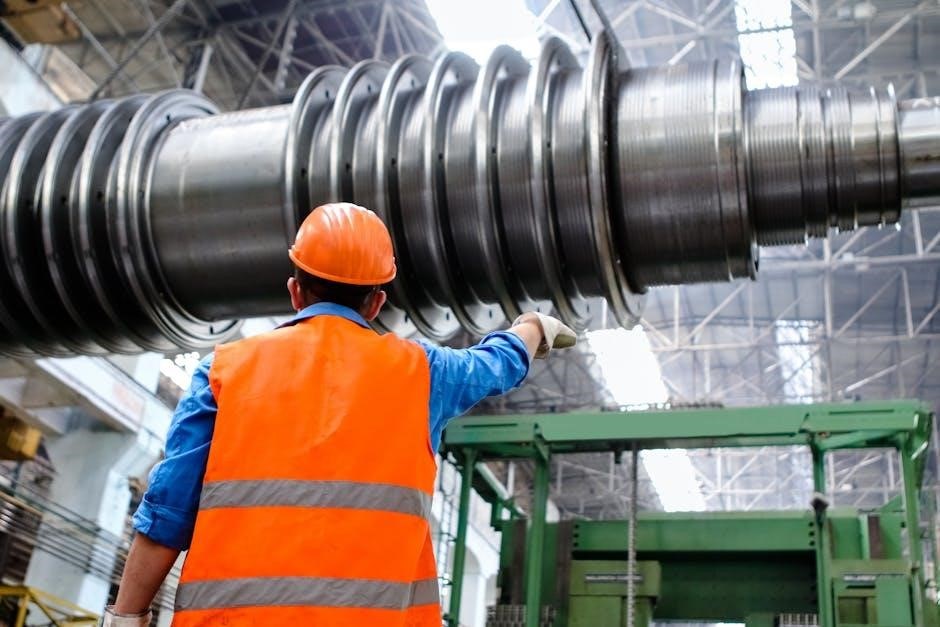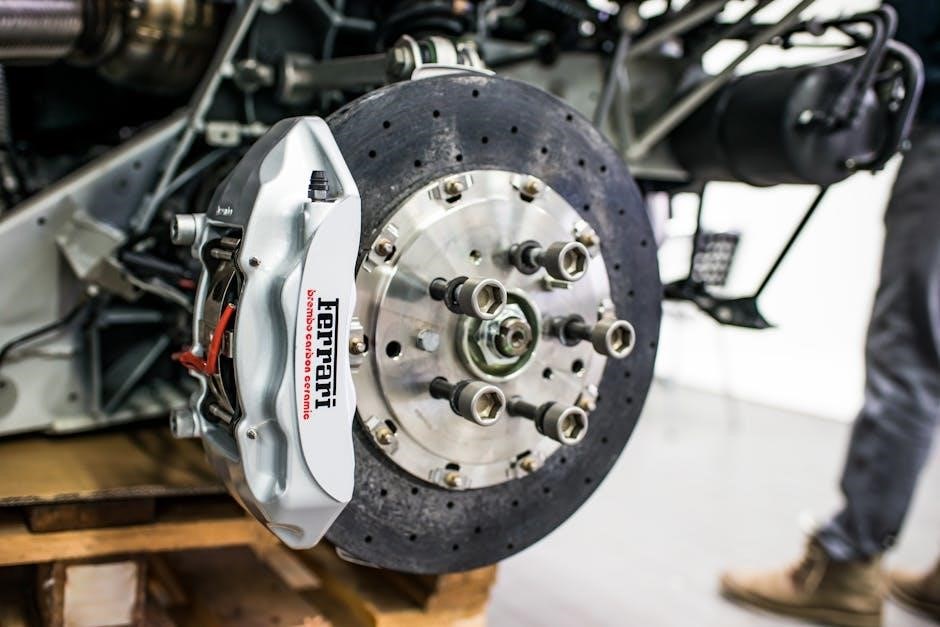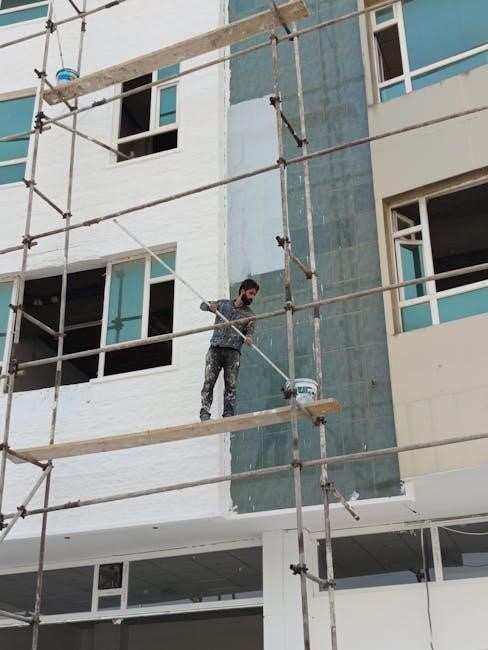Understanding Adult ADHD
Navigating adulthood with ADHD can be challenging, but numerous resources exist! This guide compiles 101 tips, offering practical help for focus, organization, and emotional wellbeing.
Discover strategies for adult ADHD treatment, coping mechanisms, and therapy options, all within a downloadable PDF format for convenient access and self-help.
What is ADHD?
Attention Deficit Hyperactivity Disorder (ADHD) is a neurodevelopmental condition often beginning in childhood, but frequently diagnosed in adulthood. It impacts executive functions – skills like planning, organization, and impulse control.
Many adults discover their ADHD later in life, realizing lifelong struggles weren’t personal failings, but symptoms of a treatable condition. Resources like the “101 tips for adulting with ADHD PDF” highlight common traits: inattention, distractibility, and difficulty with organization. Understanding this neurological basis is the first step towards effective management and self-compassion, paving the way for utilizing helpful strategies.
Common Symptoms in Adults
Adult ADHD manifests differently than in children. While hyperactivity may lessen, inattention, impulsivity, and emotional dysregulation often persist. Symptoms include difficulty focusing, frequent forgetfulness, poor time management, and chronic disorganization.
Many adults experience restlessness, difficulty completing tasks, and a tendency to interrupt. Rejection Sensitive Dysphoria (RSD) is also common, causing intense emotional reactions to perceived criticism. The “101 tips for adulting with ADHD PDF” details these symptoms, offering practical strategies for coping and improving daily functioning, ultimately leading to a more manageable life.
The Impact of Untreated ADHD
Untreated ADHD in adults can significantly impact various life areas. It often leads to difficulties in career advancement, strained relationships, and financial instability due to impulsivity and poor planning. Feelings of inadequacy, low self-esteem, and increased anxiety or depression are also common consequences.
The “101 tips for adulting with ADHD PDF” emphasizes that recognizing these impacts is the first step towards positive change. Ignoring ADHD can perpetuate a cycle of struggle, but proactive strategies, detailed within the guide, can mitigate these challenges and foster a more fulfilling life.
Diagnosis and Assessment
Accurate diagnosis is crucial! The “101 tips” PDF highlights the importance of professional evaluation alongside self-assessment tools to understand ADHD presentations.
Seeking Professional Evaluation
Embarking on the diagnostic journey is a vital step, and the “101 tips for adulting with ADHD” PDF emphasizes seeking a qualified healthcare professional. This includes doctors specializing in ADHD, psychiatrists, or psychologists experienced in neurodevelopmental conditions.

A comprehensive evaluation typically involves a detailed review of your history, behavioral observations, and potentially psychological testing. Remember, self-diagnosis isn’t sufficient; a professional can accurately identify ADHD and rule out other potential causes for your symptoms. The PDF resource underscores that treatment begins with hope and accurate understanding.
Self-Assessment Tools & Questionnaires
While not a substitute for professional diagnosis, the “101 tips for adulting with ADHD” PDF acknowledges the value of initial self-assessment. Various questionnaires and checklists can offer preliminary insights into potential ADHD traits. These tools often focus on symptoms like inattention, hyperactivity, and impulsivity, common hallmarks of the condition.
However, the PDF stresses caution: self-assessment results should be discussed with a healthcare professional. They provide a starting point for conversation, helping you articulate your experiences and concerns during a formal evaluation. Remember, these tools are indicators, not definitive diagnoses.
Understanding Different ADHD Presentations
The “101 tips for adulting with ADHD” PDF highlights that ADHD isn’t a one-size-fits-all diagnosis. It manifests differently in individuals, with varying presentations. Predominantly inattentive presentation involves difficulty focusing, organization, and following through on tasks. Hyperactive-impulsive presentation features restlessness, impulsivity, and difficulty waiting their turn.
Combined presentation exhibits symptoms from both categories. Recognizing your specific presentation, as detailed in the PDF, is crucial for tailoring strategies. Understanding these nuances allows for a more targeted approach to managing symptoms and maximizing the effectiveness of coping mechanisms.

Strategies for Focus & Productivity
The “101 tips” PDF emphasizes techniques like the Pomodoro method and time blocking to enhance focus. Minimize distractions and prioritize tasks for optimal productivity!
Time Management Techniques (Pomodoro, Time Blocking)
Adults with ADHD often struggle with time perception and task initiation. The 101 tips resource highlights the Pomodoro Technique – working in focused 25-minute bursts with short breaks – as a powerful tool. This combats overwhelm and maintains concentration.
Similarly, time blocking, scheduling specific blocks for dedicated activities, provides structure. These techniques, detailed in the PDF, help break down large tasks into manageable segments. They also foster a sense of accomplishment and reduce procrastination, crucial for individuals navigating ADHD challenges. Consistent implementation is key to success!
Minimizing Distractions in Your Environment
The 101 tips guide emphasizes that a distraction-reduced environment is paramount for adults with ADHD. Hyperfocus can be a strength, but easily derailed by external stimuli. Creating a dedicated workspace, even a small one, is a vital first step.
The PDF suggests silencing notifications, using website blockers, and employing noise-canceling headphones. Decluttering your physical space also minimizes visual distractions. Communicating boundaries with housemates or family members regarding interruptions is equally important. Proactive environmental control fosters concentration and boosts productivity for those with ADHD.
Utilizing To-Do Lists & Prioritization Methods

The 101 tips resource highlights that traditional to-do lists can be overwhelming for adults with ADHD. Instead, breaking down large tasks into smaller, manageable steps is crucial. Prioritization methods, like the Eisenhower Matrix (urgent/important), are strongly recommended within the PDF.
Focus on completing one small task at a time to build momentum and avoid feeling paralyzed. Time blocking, pairing tasks with specific time slots, also aids focus. Regularly reviewing and adjusting lists prevents them from becoming sources of anxiety. Effective list-making transforms chaos into achievable goals.

Organization & Daily Living
Adults with ADHD often struggle with organization; the 101 tips PDF offers solutions! Create systems for paperwork, declutter spaces, and establish consistent daily routines.
Creating Systems for Managing Paperwork
Paperwork can quickly overwhelm individuals with ADHD, leading to missed deadlines and increased stress. The 101 tips PDF emphasizes establishing clear, simple systems to conquer this challenge. Begin by designating a central “command center” – a physical inbox for all incoming papers.
Immediately sort items into categories: “To File,” “To Action,” and “To Shred.” Process “To Action” items promptly, and schedule dedicated filing time weekly. Consider digitizing documents to reduce clutter and improve accessibility. Utilize color-coded folders and labels for easy retrieval.
Remember, consistency is key! Small, regular efforts prevent paperwork from spiraling out of control, fostering a sense of calm and control.
Decluttering & Simplifying Your Space
A cluttered environment exacerbates ADHD symptoms, increasing distraction and hindering focus. The 101 tips PDF advocates for a minimalist approach, emphasizing that less truly is more. Start small, tackling one area at a time – a drawer, a shelf, a corner.
Employ the “four-box method”: Keep, Donate, Trash, and Relocate. Be ruthless in discarding items you no longer need or use. Prioritize functionality and accessibility. Clear surfaces promote a calmer mindset.
Regular decluttering prevents overwhelm and creates a more supportive environment for productivity. Simplifying your space directly translates to simplifying your life, reducing cognitive load and fostering a sense of control.
Establishing Routines & Habits
Individuals with ADHD often thrive on structure, yet struggle with initiating and maintaining it. The 101 tips PDF stresses the power of routines to minimize decision fatigue and automate daily tasks. Begin with small, achievable habits – making the bed, setting out clothes the night before.
Visual schedules and reminders are invaluable tools. Break down larger tasks into smaller, manageable steps. Consistency is key, even on weekends.
Don’t aim for perfection; focus on progress. Routines provide a sense of predictability and control, reducing anxiety and improving overall functioning. Celebrate small wins to reinforce positive habits and build momentum.

Motivation & Emotional Regulation
The 101 tips PDF highlights breaking down tasks and utilizing reward systems for motivation. It also addresses Rejection Sensitive Dysphoria (RSD), offering coping strategies.
Breaking Down Tasks into Smaller Steps
Adults with ADHD often feel overwhelmed by large projects. The 101 tips PDF emphasizes a crucial strategy: decompose tasks into significantly smaller, more manageable steps. This approach reduces the initial activation energy required to begin, combating procrastination.
Instead of “Clean the kitchen,” break it down into “Clear the counters,” “Load the dishwasher,” and “Wipe down the sink.” Each completed mini-task provides a dopamine boost, reinforcing positive momentum. This method transforms daunting challenges into a series of achievable wins, fostering a sense of accomplishment and sustained motivation. It’s a cornerstone of ADHD management.
Reward Systems & Positive Reinforcement
The 101 tips PDF highlights the power of reward systems for adults with ADHD. Due to differences in dopamine regulation, external rewards can be particularly effective in reinforcing desired behaviors and building new habits. These don’t need to be extravagant; small, immediate rewards work best.
Celebrate completing even minor tasks with something enjoyable – a short break, a favorite snack, or listening to music. Positive reinforcement strengthens neural pathways associated with productivity, making it easier to repeat those behaviors. This strategy combats the tendency towards negative self-talk and fosters a more positive relationship with task completion.
Coping with Rejection Sensitive Dysphoria (RSD)
The 101 tips PDF addresses Rejection Sensitive Dysphoria (RSD), a common experience for individuals with ADHD. RSD involves intense emotional pain triggered by perceived criticism or rejection, far exceeding the situation’s actual impact. Understanding this isn’t simply “being sensitive” is crucial.
Strategies include reframing negative thoughts, practicing self-compassion, and recognizing that RSD is a neurological response; The guide suggests separating intent from impact – others’ actions aren’t always personal attacks. Building a strong support system and practicing assertive communication can also mitigate RSD’s effects, fostering emotional resilience.

Self-Care & Wellbeing
Prioritize self-care! The 101 tips PDF emphasizes sleep hygiene, nutrition, and exercise as vital components for managing ADHD and boosting overall wellbeing.
The Importance of Sleep Hygiene
Consistent sleep is crucial for individuals with ADHD, as sleep deprivation exacerbates core symptoms like inattention and impulsivity. The 101 tips PDF highlights establishing a regular sleep schedule, even on weekends, to regulate your body’s natural sleep-wake cycle.
Creating a relaxing bedtime routine – perhaps a warm bath or reading – signals your brain it’s time to wind down. Optimize your sleep environment by ensuring a dark, quiet, and cool bedroom.
Avoid caffeine and alcohol before bed, and limit screen time as the blue light emitted can interfere with melatonin production. Prioritizing sleep is a powerful self-help strategy!

Nutrition & ADHD: Foods to Focus On
The 101 tips PDF emphasizes that diet significantly impacts ADHD symptoms. Focus on a balanced diet rich in protein, complex carbohydrates, and healthy fats to stabilize blood sugar levels and support brain function. Prioritize foods like salmon, rich in omega-3 fatty acids, known for their cognitive benefits.
Minimize processed foods, sugary drinks, and artificial additives, as these can worsen hyperactivity and inattention. Regular meals and snacks prevent energy crashes and maintain focus throughout the day.
Hydration is also key – drink plenty of water! Consider consulting a nutritionist for personalized dietary recommendations.
Exercise & Physical Activity for ADHD
The 101 tips PDF highlights exercise as a powerful, non-medication approach to managing ADHD. Physical activity boosts dopamine and norepinephrine levels, neurotransmitters often deficient in individuals with ADHD, improving focus and reducing impulsivity.
Aim for at least 30 minutes of moderate-intensity exercise most days of the week. This could include brisk walking, running, swimming, or cycling. Even short bursts of activity, like taking the stairs or dancing, can be beneficial.
Find activities you enjoy to increase adherence and make exercise a sustainable habit!

Relationships & Social Skills
The 101 tips PDF emphasizes effective communication and boundary setting for those with ADHD, fostering healthier relationships and navigating social interactions successfully.
Communicating Effectively with Loved Ones
The 101 tips PDF highlights the importance of open and honest communication with partners, family, and friends regarding ADHD-related challenges. It suggests explaining how ADHD impacts daily functioning, such as forgetfulness or difficulty with emotional regulation, to foster understanding and empathy.
Specifically, the guide recommends using “I” statements to express needs and feelings without blame, actively listening to loved ones’ perspectives, and collaboratively developing strategies to navigate potential conflicts.
Learning to articulate these needs clearly, as detailed in the PDF, can significantly improve relationship dynamics and reduce misunderstandings stemming from ADHD symptoms.
Managing Impulsivity in Social Situations
The 101 tips PDF addresses the challenges of impulsivity in social settings for adults with ADHD. It suggests practicing mindful awareness of urges to interrupt or dominate conversations, and developing pre-planned responses for common social triggers.
Strategies include taking a deliberate pause before speaking, actively listening to others, and employing self-soothing techniques like deep breathing when feeling overwhelmed. The guide emphasizes the importance of recognizing personal impulsivity patterns.
Furthermore, the PDF recommends seeking understanding from close friends about potential social faux pas, fostering a supportive environment for navigating these situations.
Building & Maintaining Healthy Boundaries
The 101 tips PDF highlights boundary setting as crucial for adults with ADHD, often struggling with overcommitment and difficulty saying “no.” It advocates for clearly defining personal limits regarding time, energy, and emotional availability.
The guide suggests practicing assertive communication skills, using “I” statements to express needs without guilt, and recognizing that setting boundaries is self-care, not selfishness. It emphasizes the importance of consistently enforcing established boundaries.
The PDF also encourages prioritizing personal wellbeing and recognizing when to disengage from draining interactions, fostering healthier relationships and reducing overwhelm.

Medication & Therapy Options
The 101 tips PDF emphasizes exploring medication with a doctor and the benefits of Cognitive Behavioral Therapy (CBT) for ADHD symptom management.
ADHD coaching and support groups are also recommended resources for navigating challenges and building a supportive community.
Exploring Medication Options with a Doctor
The 101 tips for adulting with ADHD PDF highlights the importance of a collaborative approach when considering medication. It stresses that finding the right medication, and dosage, is often a process of trial and error, guided by a qualified medical professional.
Discussing your specific symptoms, medical history, and any other medications you’re taking is crucial. Different medications target different symptoms – some improve focus, while others manage impulsivity. The PDF emphasizes open communication with your doctor to monitor effectiveness and potential side effects, ensuring a personalized treatment plan that supports your overall wellbeing and maximizes positive outcomes.
The Benefits of Cognitive Behavioral Therapy (CBT)
The 101 tips for adulting with ADHD PDF underscores Cognitive Behavioral Therapy (CBT) as a powerful tool for managing ADHD symptoms. CBT helps individuals identify and modify negative thought patterns and behaviors that contribute to challenges with focus, organization, and emotional regulation.
Unlike medication, CBT equips you with lifelong skills to cope with ADHD. It focuses on practical strategies, like breaking down tasks and managing time effectively. The PDF highlights how CBT can address co-occurring conditions like anxiety and depression, offering a holistic approach to improving overall mental wellbeing and fostering greater self-awareness.
ADHD Coaching & Support Groups
The 101 tips for adulting with ADHD PDF emphasizes the value of ADHD coaching and support groups as complementary resources to therapy and medication. Coaches provide personalized strategies and accountability, helping individuals implement the tips for improved daily functioning.
Support groups offer a safe space to connect with others who understand the challenges of ADHD, reducing feelings of isolation and fostering a sense of community. The PDF suggests seeking out groups tailored to adults, providing peer support and shared experiences. These resources empower individuals to navigate ADHD with greater confidence and resilience.
















































































